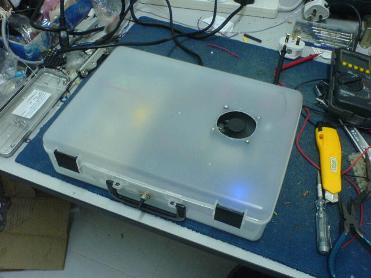|
DIY Amplifier, Vacuum Tube Category
READ THIS FIRST! Don’t just jump straight into DIY amplifier yet! Before we get started, we need to make sure we adhere to the DIY amplifier processes in order to avoid complications in the later stage. Spending more time now will reward us and prevent us from failure! Take this from a guy who had walked the rushed path before and regretted it till today. Let’s do it right the first time! Here are the major steps:
Wants & needs analysis What are your wants and needs in DIY tube amplifier? “Wants & needs” dictate what you’d like to build, in terms of internal (sonic) and external (outlook) characteristics. It also depends on your listening taste, environment, partnering equipment, setup biasing, and etc. Different tubes, circuits, components, output power, tuning and etc will affect the sound and look. Therefore, one needs to know all these before they go further into the DIY process. There are slight differences between wants & needs. Want is what you desire, what you intended to have. Need is what you and your system requires. For example, if you like very brightly lit vacuum tube amplifiers – you can choose tubes with tungsten filaments. It has no relationship at all to what you need. Need is something like the output power required to drive your speakers sufficiently to fill your listening with sound or music. Need is something like the number of sources you have, therefore commanding the equivalent number of inputs to your amplifier. Let’s move on. In this phase, you will get to know and define the following:
Choose your own poison! DIY tube amplifier is starting to get complicated, isn’t it? Feel lost? Don’t understand all? Don’t be afraid. If you do not know what you want, just go look and listen around to see what you like, determine your tube amplifier requirements, or just for the fun of DIY, “Just do it”! After you’re clear on what you needed and wanted on your analysis above, the real fun begins! It always takes me the longest time to research and design my own amplifier. There are just soooooo many designs out there and soooo many things to consider. R&D here could be applied here to the chassis design, amplifier design, layout design, system design, thermal design, and etc. Think about it makes me feel high! I’m a natural born R&D engineer! The fun part about this is, instead of being limited to what other people designed, you can decide on your own! No one knows yourself better! Finalizing one to build is really a big joy, or headache! :P Take your time here. You will be handsomely rewarded if you put enough care and effort in this, and the planning phase. Expandability and design for test Whenever you build your amplifier or system, always think about these 2 words – expandability & DFT (Design For Test). Leave some room for expansion. One will never know what might arise in the future, or even during the construction process! Something might go wrong and demand for space for further / future upgrades, tweaks, or even correction! On the other hand, always layout and make your amplifier as testable as it can be. After you finished building your amplifier, what comes next is the testing phase. Even after the system is in service, one might need to service or tune it if some components break down, or the tubes go weak. Or even when someone helps you to troubleshoot your amplifier. All these require thoughts and planning prior to the construction. Planning & sourcing for components This could be the fun part for some, and pain in the *** for some. LOL. I, for one, love sourcing for parts, minus the act of taking out my credit card or hard earned cash to pay for them. LOL. Sourcing is just like cooking! Think of what to cook, and go get all the ingredients. The fresher and better the ingredients, the better your dish would be. Once the design is finalized, you can start listing out all the required parts in a spreadsheet and categorize them:
Hardware could be chassis, screws & nuts, spanner, screwdrivers, saw, hole punch, drill & bits, and etc. Electrical & electronics could be wires, capacitors, resistors, inductors, fuses, I/C, tubes (yes!), multimeters, LCR meter, oscilloscopes, spectrum analyzer, distortion analyzer, and etc. All these can be obtained at your local stores, our bought online. There are mainly 2 types of stores, audiophile and non-audiophile versions. Non-audiophile versions could just be like Maplin, Mouser Electronics, Radioshack, RSWWW, Farnell, and those general hardware, electrical & electronics stores. Audiophile ones are those that cater for mostly audio related components, and usually they carry a premium due the better sound quality and marketing strategy of the shops. I use a mixture of audiophile and non-audiophile components. Audiophile components do bring better sound quality no doubt! I use generic components for those less critical (to sound reproduction) areas and splash on those important sections like the coupling capacitors, output transformers, vacuum tubes and such.
Even eBay and Amazon are good sources for components! Build and finishing How do you want your DIY project to look? Like a “DIY project” or professionally finished? We’re quite lucky nowadays as there are lots of shops now selling finished or semi-finished amplifier chassis. The materials range from aluminum, mild steel, to stainless steel. My personal favorite are aluminum as they’re easier to work with but pain in the *** to finish. Finishing options are plenty as well, like paint, plating, brushed, powder coated and such. Different finishing has their pros and cons. Recently I like buying semi-finished (brushed aluminum) chassis for my projects. They’re less hassle to work with. One can even hire or commission someone to build the tube amplifier chassis for you. I do use this option some of the time since I’ve several friends who are in this line. They can use CNC machine to build me nice metal and wood based chassis with a charge. If you want your DIY tube amplifier finishing to look nice, make sure you plan your hardware work properly. Defects on the surfaces will ruin the finishing and give you more hard work if you want to make it look nice later. So, use care and do not remove the protective covers (some do come with it) until you’re happy and finalized your project. Testing & tuning tube amplifier for good sound Have you used, or even heard of multimeters, oscilloscope, spectrum analyzer, frequency generator / synthesizer, distortion analyzer, and such? Don’t worry! We shall give you a briefing on them too in this website. For now, just remember that they will be your best friends in the DIY amplifier world. The MOST basic equipment one should own is the multimeter. You can live without the others but this is a MUST. It will be used to check the inductance, capacitance, resistance, open / short, frequency, voltage (AC & DC) and etc of your DIY amplifier. When a project is completed, we shall use the multimeter to check the DIY amplifier to make sure everything is built according to the design. After we powered-up the project, we shall use the multimeter to check for correct voltages and biasing of the amplifier. How do we tune the tube amplifier sound? This is a very difficult question! This can be done through many, many ways! It is impossible to cover it all in just the briefing / introduction section. We shall share with you on the tuning as we post more DIY projects or DIY amplifier projects in this website. These are just a few ways on how we tune the sound and is not comprehensive:
Installation and setting up in your system Congratulations! You’ve come to the stage of installing and setting up your tube amplifier in your system. You’ve come a long way and I’ve gotta give you a pat on your back, and tell you “Good job mate!”. Nothing beats listening to your own hand crafted project for the 1st time. I’m sure it would be a great looking and sounding project too if you put enough effort into making it. All right! This sums up what we’ve to say on DIY amplifier. We shall cover more on those topics in the later phase. This is just the introduction! Since I’ve just finished DIY tube amplifier: 5687 IT coupled 6B4G integrated amplifier to power the Zu Soul Superfly (101dB/w/m) , I will use that as the reference or example to illustrate the whole process. Return from DIY Amplifier to DIY Tube Amplifier
|





